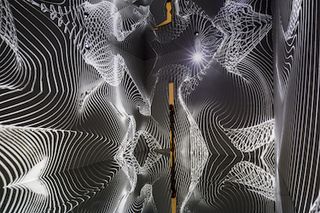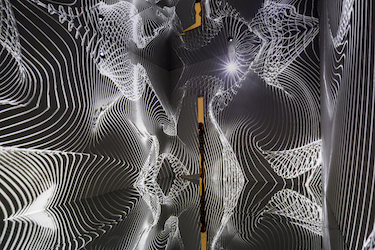
- Epson has partnered with award-winning media artist and designer Refik Anadol to create two immersive projector installations blending light and art at the upcoming InfoComm Show in Las Vegas. Leveraging Epson’s new Pro L1000-Series large-venue laser projectors, Anadol will demonstrate the new models’ high image quality and flexibility benefits in a unique and tangible way. The installations will be showcased at Epson’s booth, C6333.
- “Light is an important part of my work, used to create new spaces and blur and interconnect the boundaries between physical and virtual realms,” said Anadol. “Working with Epson’s new Pro L-Series laser projectors provides the image quality, reliability, and flexibility I need to display my work, allowing me to focus on the art and design, and not worry about the technology.”
- The Pro L1000-Series laser projectors and the Epson SureColor T7270 wide-format printer were leveraged for the creation of the two installations to be shown at InfoComm, “Infinity” and “Cavity.”
- Infinity: Using the Pro L1000-Series projectors, Anadol will construct an immersive environment designed to create a perception of presence in a non-physical world. The projectors allow Anadol to transform a conventional flat screen into a three-dimensional space of visualization.
- Cavity: Anadol will project images from the Pro L1000-Series on three printed surfaces, created with the SureColor T7270 44-inch-wide printer. Exploring the ephemeral nature of space, this installation suggests that perhaps all spaces and facades have the potential to be used as artist canvases.
- “Partnering with Refik Anadol provides a unique opportunity to showcase our new laser projectors while also providing InfoComm attendees with a memorable experience that brings projection and art to life,” said Sean Gunduz, senior product manager, Projectors, Epson America. “Through this experience, attendees can see firsthand how Epson’s Pro L-Series are ideal large-venue applications, from a wide color gamut for brilliant and complex images to up to 20,000 hours of virtually maintenance-free operation.”











